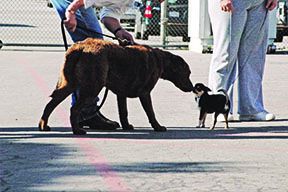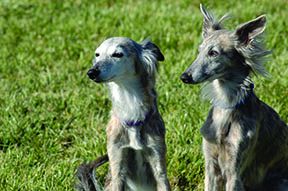Download The Full January 2013 Issue PDF
Sardines: Not Hot.
Nights with typical winter temperatures are finally arriving here in Northern California. (Sorry! I know that many of you have been experiencing freezing temps at night for weeks – months? – already.) And with the cold comes Tito’s reluctance to go outside and potty on any schedule other than his own.
Tito is a Chihuahua – well, probably a Chihuahua-mix. (Our niece, who left him with us “temporarily” two years ago bought him as a puppy, goodness knows where; he’s likely a puppy mill product.) He’s far larger than the breed standard and he has a thick coat, like a Labrador! But he has the typical Chihuahua’s aversion to being cold without a darn good reason. Suddenly he won’t come to me when I want him to go outside and pee before I go to bed. “Naw,” he seems to say from the comfort of his bed in the living room. “I’m fine! I don’t have to go! Y’all go without me!”
Otto always goes out; you never know when you might see a raccoon or stray cat out in the yard. Yahoo! Bonus! But after his pee, he wants to come right back in. In his rash youth, he wanted to sleep outside all night every night. (His large crate has an insulated cover on it, like this: gundogsupply.com/mudriver-large.html. And it’s stuffed with several layers of plush pads. And it’s right outside the back door, on the covered porch. There is no door on the crate, just the insulated cover’s front hanging down, like a tent flap, so he can enter and exit at will but still stay snug.) Every once in a while, probably on high-cat-activity nights, he’ll go into his crate instead of coming into the house after his pee, making his choice for that night. But most nights now, starting in mid-October or so, he takes the indoor option. He’s an adult now!
Tito always sleeps inside. When it was warmer, he’d always take the “last chance to pee tonight” option, but not now. NOW THAT IT’S FREEZING AT NIGHT, he skips the pre-bedtime pee – in favor of the 4 or 5 am, whining at my bedside option. Gah! Well, it’s better than just peeing in the house. So I always respond, and jump out of bed and let him out. He’s fast and businesslike – but the damage is done. Once my feet are frozen (even with socks) I have a hard time getting back to sleep.
So I’ve been working on reinforcing the last-chance pee. And as the temperature drops, it’s taking higher-and higher value rewards to get him to come to me and go outside before bedtime. Kibble stopped working at 50 degrees; cheese and even meat failed at about 40. Now we are down into the sardine temperatures. And I can’t tell you just how sexy it is to smell like sardines in bed! Ha!
(Walking Your Dog #4) Walking an Excited Dog by Pat Miller
You contemplate taking your dog for a walk with mixed emotions. You love the idea of going for a companionable stroll through the neighborhood together, but when you pick up his leash he becomes the Tasmanian Devil.
Here are suggestions for turning this potential disaster into the enjoyable outing you dream of.
Exercise first. Spend 15-20 minutes tossing a ball for your dog in the backyard, or providing intense mental exercise with a heavy duty shaping session. You’ll take the edge off his excitement, reduce his energy level, and make leashing-up and walking more relaxed and enjoyable for both of you.
Pick up his leash throughout the day. He gets amped up when you touch his leash because it always means the two of you are going for a walk. If you pick up his leash numerous times throughout the day, sometimes draping it over your neck and wearing it for a while, sometimes carrying it from room to room, sometimes picking it up and putting it back down, the leash will no longer be a reliable predictor of walks, and he won’t have any reason to get all excited about it.
Use negative punishment. Not a bonk on the head. It means setting up the situation so that doing the behavior you don’t want causes a good thing to go away. If, when you pick up the leash, he goes bonkers (the behavior you don’t want), say “Oops!” in a cheerful tone of voice (what’s known as a “no reward marker,” it simply tells him no reward is forthcoming), set the leash down, and walk away. When he settles down, pick the leash up again. You’re teaching him that getting excited makes the opportunity for a walk go away; staying calm makes walks happen.
For more information on how to reform a puller into a more pleasant walking companion purchase Whole Dog Journal’s Walking Your Dog ebook.
(The Encyclopedia of Natural Pet Care #4) Do Dogs Require a “Balanced Diet”?
The notion that every meal an animal eats should be completely balanced is a recent invention resulting from the use of packaged foods. If you were restricted to the same food in the same amount every day for the rest of your life, each identical meal would have to be nutritionally balanced because you would have no other source of nutrients. But you don’t eat this way, you don’t feed your children that way and animals in the wild don’t eat that way. It’s completely unnatural. What matters is not whether tonight’s dinner contains 100 percent of every nutrient your body requires but whether all of the combined foods you eat today or this week provide them.
From long-time Whole Dog Journal contributor CJ Puotinen’s incredible resource, The Encyclopedia of Natural Pet Care, this 500+ page volume is everything you need to know to ensure good health and long life for your dog. You can purchase it right now from Whole Dog Journal.
Practice, Practice, and Benefit
I used to live next door to a woman who played the Bassoon. She was in the local community orchestra, in quartets and quintets in the community. She had been playing the instrument for many years, now semi-retired and getting much satisfaction from her involvement with the local groups.
It was very common for me to hear her practicing, doing scales, playing bits of movements from the next Sibelius Concerto or whatever that they were going to be performing. This is a person who played for years, is quite accomplished, yet she continues to go back to basics, refresh and remind the fingers, the mouth, the mind, of the early things learned. (Of course, as a double reed instrument, one does need to maintain practice just to be successful at making it sing.)
When you or I took guitar or violin or piano lessons as children, we were reminded that we needed to practice each day between lessons in order to retain competence. Those of us that didn’t embrace this advice tended to give up the lessons for other pursuits. The flute or clarinet was returned to the rental store, the guitar went back to the closet to gather dust.
But again and again I hear from people who took their dog to a puppy class or to a beginning obedience class and then expected the dog to know how to behave from then on. When I explain that reminders and practice and new skills are good for all dogs, I often hear resistance. Shouldn’t that one 6-, 8-, or 10-week class have taken care of the rest of the dog’s life? Shouldn’t he then know to come when called, keep off the furniture, refrain from jumping on people, stay when asked?
We lead busy lives. It takes time and effort to communicate formally or even with concentrated focus with our dogs. It also brings huge rewards that make every minute of doing so worth the time. It builds our relationship, it allows for more freedom to the dog to join us in more activities, it becomes something that our dog very much looks forward to each day, the joy of interacting with us, and using his brain. In my book, it’s all upside — the only downside being carving the time out of our day. It allows us to learn and understand more and more about our dog.
It doesn’t need to be much time. Even a couple of 10-minute or a few 5-minute focused attention slots in our day will be a huge advantage to both dog and person. When we put the guitar away in the closet or close up the piano, there is not much cost. But if we do this with our dog, there is a big cost. They pick up habits that displease us, they lose beneficial privileges because of unruly behavior or a lack of self-control. We may even begin to resent them a bit. Some investment in teaching them, communicating with them would bring the exact opposite result. We grow to love them and appreciate them so much more when we actually put time and focus on tutoring them in desirable behavior, teaching them fun tricks, or finding that they have amazing aptitude, well beyond what we could have imagined.
And yes, we need to continue to practice our scales throughout their lives. They may become very proficient at many things, but refreshing and renewing the basics will always come in handy. The more we engage with our dogs, become active participants in their lives and in communicating with them, the more we appreciate them and they us. We can’t just take them through one beginner-level class and call them done. And the more we ask of each other, the more amazing our partnership becomes.
They can’t be put in the closet. And we don’t want to give up on what could be a profound and wonderful relationship, just because we neglected feeding it or nurturing it. If we start out right, prevent the things that aren’t so cute when they are adults or not so newly adopted, but more established in our homes, watch their joy as they learn new things, it can only result in a beautiful thing. The investment pays off exponentially. And they don’t have much risk of being surrendered to a shelter or rescue, their lives upended.
Tricia Breen has been involved with horses and dogs for most of her life. She studied biology and animal behavior in college, and spent years training her dogs and helping others to teach their dogs while moving around the country. Once settled back in her native California, she participated in and taught classes at her local dog training club, then taught classes and conducted behavior consults at the Marin Humane Society. For the last five years, Tricia was the Director of Animal Care and Adoptions at Marin Humane Society, always keeping an eye toward helping dogs and volunteers with shelter life. She has recently left this role and gone back to assisting people with their dogs to build relationships, consulting with behavior and training issues. She can be reached via www.canine-behavior-associates.com as a new partner in this endeavor.
Calm Yourself!
Last week, I was approached by someone who works with people I know. She wanted to know if I could help her with a dog that she was considering adopting. She told me:
The dog was adopted as a 12-week-old pup by someone else. That person has a full-time job, two young kids, and is suffering from an as-yet-undiagnosed but painful back problem. The dog failed to get housetrained and after three months, she is declared to be “too much” for the house and the kids.
Her prospective owner took her home and though she likes the dog’s looks (she’s a chunky “blue” pit-mix) and thinks she’s a sweet dog, she agrees that the dog may be “too much” for her home, too. She is not housetrained, she chews everything, she jumps on people, and she’s got too much energy. Her 10-year-old son loves the dog and really wants to keep her, but the woman is thinking about surrendering the dog to a shelter.
So, I agree to take this “too much” dog for a few days and do some training, and give her my opinion about whether she is a good candidate to live in a family with a young kid.
We meet the next morning. She says she is feeling quite negative about keeping the dog this morning, as the dog “chewed up a couch” last night. I asked whether she has or would use a crate. She responds, “I put her in the crate last night but I must not have latched it right!”
She brings the dog out and she’s a typical wiggly, waggy, thumpy, untrained, adolescent pit-mix. No self-control, no manners, dragging her handler around, and immediately jumping on me and her handler. But, significantly, when she jumps on her prospective owner, the woman puts both her hands on the dog and pats and rubs and baby-talks to her. “You’re a good girl, you just need some training, don’t you?” she says to the dog.
I won’t go into too much detail here. Suffice to say, I think the dog is whip-smart and highly trainable. In five days at my house, she showed no signs of aggression toward people, other dogs, cats, or chickens. She learned “sit” in minutes, and “off” and “look at me” in a day. She would pee ON CUE after one day’s worth of practice, and after three days, would go poop on cue, too. I took her for a long off-leash walk out in our local wildlife area every day, and she came back and happily took a long snooze in a crate afterward. She didn’t try to pick up or chew a single non-dog-toy, but played with the toys my dogs had laying around quite nicely. And best of all (from my perspective), she showed me in our very first training session that she was supremely capable of self-control; I just had to reinforce it – and make sure that no one she met reinforced its opposite.
I suspect that all the members of both families who have had this dog in their homes have thumped and hugged and rolled around with this exuberant, physical pup. On the first day, I saw that she leans – hard — into any physical contact, whether it’s a leash, petting, or someone trying to guide her into a crate. She LOVES physical contact with people, just absolutely eats up being petted and stroked. I used calm petting – no thumps or pats! – as a reward for her calm behavior. If she started to get riled up, I removed my hands and looked away, and only put my hands on her again when she sat calmly.
The question here is not whether the dog is a dud – it’s whether the dog’s prospective family is capable of managing their own behavior around her! I hope that when the woman sees how well-behaved the dog is capable of being, she’ll be interested and motivated enough to learn how to maintain that behavior, with regular exercise and trips outside to potty, a sturdy crate, appropriate dog toys and supervision, and most of all, support for the dog’s calm, quiet interaction. Exuberance and goofiness are fine – outside and upon request. But failing to teach a big, strong dog to be calm and polite (and maintain that behavior with calm petting, treats, and praise) and then sending her to a shelter to try to find another home would be a tragedy.
Work to improve your dog, but accept his preferences and limitations, too
We have to find balance in our relationships. We need to work to help our dogs live comfortably with us and our chaotic human world. This takes time, practice, patience, observational skill, a willingness to work at it. If our dogs are uncomfortable with other dogs, get worked up when on-leash, or are fearful of new people or new environments, we help them to work through these things. We want them to be comfortable, reduce the stress and anxiety that they might feel. We want them to be comfortable so that we can take them more places with us, enjoy their company in more venues.
We also need to know when to accept who they are, to be willing to change our expectations of them. If they don’t want to meet lots of other dogs, we need to accept that. If they don’t want to hang out at the coffee shop while we sit at the table visiting and drinking our caffeine, we need to accept that. If we have a dog that really gets no enjoyment out of agility, we need to question why we might be insisting.
As with people, there are introverts and extroverts in dogs. There are shy dogs, driven dogs, dogs who love to meet everyone and anyone, and dogs who prefer a small circle of friends only. So we work on making things better as much as possible for them, minimize the stress, maximize the comfort, then we adjust the environment to fit with who they are.
When someone calls me to say that they don’t want to have to make any changes in their own lives to meet their dogs’ needs, one of my tasks might be to reset their expectations. If one’s daughter decides that med school or law school is not for her, a good parent supports that decision and understands that the love of another avenue is a perfectly fine thing for their child.
I have one such dog that has limitations. He likely had distemper as a pup and is a bit limited in his ability to do things that the other dogs can do. He can’t go to as many places as the other dogs, but we have made concessions, made his life work for him and for us. We have learned to appreciate who he is, have not pushed him beyond his ability.
We have to compromise in our human relationships, too. If you are not fond of endless holiday cocktail parties with people you don’t really know, your partner — who might love such gatherings, understands that it might too much to ask to expect that you attend one after another. Your partner could come up with a plan so that you could attend just a few of them, and they could attend a greater number independently or skip some of them. This is how relationships work and thrive.
Wouldn’t it be great if we made our relationships with our dogs worked that way too? Wouldn’t it be to great to help them to be comfortable in our world while not pushing them beyond their innate abilities, understand that they might have preferences or limitations. Just imagine if your parents insisted that you go to medical school even though your dream was to become an artist. Our dogs are just as individual as we are.
Tricia Breen has been involved with horses and dogs for most of her life. She studied biology and animal behavior in college, and spent years training her dogs and helping others to teach their dogs while moving around the country. Once settled back in her native California, she participated in and taught classes at her local dog training club, then taught classes and conducted behavior consults at the Marin Humane Society. For the last five years, Tricia was the Director of Animal Care and Adoptions at Marin Humane Society, always keeping an eye toward helping dogs and volunteers with shelter life. She has recently left this role and gone back to assisting people with their dogs to build relationships, consulting with behavior and training issues. She can be reached via www.canine-behavior-associates.com as a new partner in this endeavor.
Smallville
The first small dog I ever owned came to me as a hand-me-down. My sister’s husband brought home a long-haired Chihuahua puppy on a whim, but after the initial “new dog” thrill wore off, no one in the family took the time or had any interest in training the tiny dog. Mokie grew up eliminating in the house, chewing anything that interested him, and barking shrilly at everyone who came to the door. If they took him outside, he had to be on a leash, because he would gaily run down (and into) the street any chance he got, and no amount of calling would bring him back until he was exhausted. When I first met him, he was almost a year old and knew nothing. He responded to his name – sometimes – but didn’t know how to perform a single behavior on cue. When I asked what behaviors he knew, my sister responded with a tone that indicated I was being ridiculous for asking. “Oh right,” she said. “Like you can even train a dog that small.”

288
Well, gosh, of course you can! If you can train chickens to play the piano and goldfish to dunk tiny basketballs through tiny underwater basketball hoops – and you can, just do a search on YouTube and you’ll see proof – of course you can train a Chihuahua to sit and come to you on cue!
I spent my three-day visit with my sister training Mokie to sit, lie down, and come to me on cue, and showing everyone in the family how to support that trainingo. He was whip-smart and learned fast. But he needed time with and attention from people, and no one stepped up. It wasn’t long before my sister asked me if I could help her re-home Mokie.
Within a month of arriving at my house, he was reliably trained to do almost everything any dog should know to do: come, sit, down, off, get in your crate. (Achieving a reliable “Shush!” has been a lifelong project, however.) He was so cute and fun that we kept delaying the search for a new family for him. (Years later, after dog-sitting him for a week while I moved, my other sister fell in love with him and begged to keep him. He bonded so well to her and her husband and their two other small dogs, that I let him stay there. Mokie is now a portly 12-year-old and the best-trained dog she has (though still a bit barky!)
I’m a huge fan of force-free training for all dogs, and even though it’s grammatically incorrect to say so, positive techniques are even more perfect for training small and tiny dogs. They are every bit as smart (some would say smarter) than bigger dogs, and often very motivated to “work for food.” In my experience, the only thing about training little dogs that is more difficult than training larger ones is the speed – they often move so fast that it can be difficult at first to mark and reward their good behavior quickly enough that they understand which behavior has earned the reward.
In the article on the facing page, Training Editor Pat Miller has a lot of tips for training the tiny dog. I hope you’ll give them a try.
Training Tiny Dogs
[Updated November 16, 2017]
TRAINING SMALL DOGS: OVERVIEW
1. Commit to giving your little dog a bigger life by providing him with good manners training that makes him welcome anywhere dogs are allowed.
2. Respect your little dog’s needs and preferences; don’t coerce him just because he’s little and easily overpowered.
3. Protect your little dog appropriately from unwanted attention and potential threats.
A long time ago, I was a “big dog person.” For the first three decades of my life, I looked disdainfully down on yappy little foo-foo dogs and the people who owned them. Then I fell in love with and adopted Dusty, an 8-pound Pomeranian, and my whole perspective shifted, as did some of my long-held paradigms on small dog behavior, training, and management. I came to appreciate the behavior of owners who snatched their tiny toy breeds off the floor at the approach of a bigger dog. I was constantly worried for my little dog’s safety. I was certain one of our bigger dogs would play with him too roughly and crush him. Or worse – some unknown dog could kill him with a grab-and-shake move. And it was so easy to pick him up and carry him that I did it frequently. The concept of having an “arm-dog” began to make perfect sense to me.
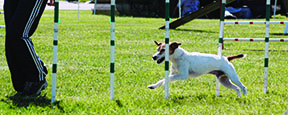
Today, I’m keenly aware that some little dogs – and their owners – play right into the small dog stereotype. Many small dogs I see in public are ill-mannered with humans, reactive toward other dogs, and yappy. Lots of little dogs strain on their leashes, don’t come when called, and think “sit” is something their owners do so the human can bend over and pet them.
But it doesn’t have to be this way. Every little dog is as capable of learning basic and advanced training behaviors as big dogs – and it’s just as important for their long-term well being and safety. Dusty had his AKC Companion Dog degree, and was well on his way to Companion Dog Excellent before bad hips curtailed his jumping and cut his show career short.
If you doubt a little dog’s ability to learn, just watch any canine competition. You’ll be amazed by the number of diminutive canines who compete successfully in obedience, agility, rally, flyball, canine freestyle, nose work and more. (In fact, every flyball competitor wants a little dog on her team, because the jump heights for the whole team are set at the proper height for the smallest dog in the group!)
Positive training techniques are equally effective for all sizes of dogs; all dogs learn in a similar fashion. That said, some minor modifications to training and management can make the relationship-building and training process more successful for little dogs. Whether your goal is a well-mannered family companion, competition titles, or both, if you keep the following concepts and tips in mind you and your little dog can be more successful and have more fun playing the training game together.
But before I describe these tips, let’s define some terms.
Defining “Small Dog”
Let’s arbitrarily define “little dog” as one that weighs 25 pounds or less. This encompasses a wide range of breeds, from the tiny, truly fragile 2-pound teacup Yorkie to the short and sturdy 20- to 25-pound Scottish Terrier. It includes dogs with such varied personalities as the independent and pugnacious Jack Russell Terrier, the more dignified and amiable Pug, the independent and aloof Basenji, the energetic and responsive Toy Poodle, and the relatively phlegmatic French Bulldog, to name just a few. That doesn’t even take into consideration the infinite combinations of small mixed-breed dogs or the wide range of individual personalities within a given breed.
A Pomeranian once seemed quite small to me, but recent decades have seen a proliferation of smaller and smaller dogs – the so-called “teacup” breeds. At a local humane society “Bark In The Park” fund-raising event recently, a couple walked past my booth with a pair of tiny Yorkies in their arms. The male, the “larger” of the two, was three pounds at full maturity. The female was a mere two pounds. They made Scooter, my current Pomeranian, who tips the scales at a whopping 12 pounds, look quite massive by comparison!
Next, let’s define “training.” Owners of larger dogs are likely to understand training as encompassing everything including polite “good manners” behaviors in the house, coming when called, walking nicely on leash, and calmly greeting new people and other dogs. But owners of small dogs might have no behavior expectations of their little companions beyond potty training – and maybe not even that! After all, jumping up is much easier to accept from a 5-pound dog than 50-pound one, so lots of little dog owners don’t bother to teach a polite greeting.
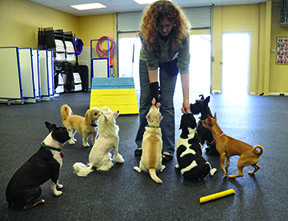
In my opinion, all dogs, even tiny ones, should be trained to exhibit all the same good manners behaviors as larger dogs, such as sitting politely to greet visitors, or asking permission for sofa privileges. For optimum quality of life and his relationship with you, it’s every bit as important for the little dog to be trained as the large one.
Considering A Little Dog?
There are a number of advantages to sharing your life with a little dog:
1. They take up less room! You can have several in the same amount of space as one Great Dane. They share your bed without hogging it. They sit on your lap and still leave room for the newspaper.
2. They don’t eat as much, so they are less expensive to feed.
3. You can get by with smaller backyards, and often (though not always) lower fences.
4. Little dog poops are tiny and inoffensive, even in the house – you can pick up their mini-feces with a tissue and flush them down the toilet. And it’s easier to train a little dog than a Mastiff to use a litterbox, if that suits your lifestyle.
5. You are much less likely to worry about counter-surfing.
6. Your little dog is less likely to knock over your 93-year-old Great Aunt Helen when she comes to visit (although a little dog can run under her feet and trip her up).
7. The little dog is highly portable; you can fit him under an airline seat, in your shopping cart, or in a doggie backpack. You can still drive a sports car!
8. Finally, your little dog is less intimidating to people who are fearful of dogs, and more acceptable to landlords, hotels, motels, outdoor cafes, and other public places.
Of course, there are also some disadvantages.
– Little dogs do break more easily, especially those with very fine bones, such as Chihuahuas and Italian Greyhounds.
– Because of their small size, they can be mistakenly perceived as good pets for children. Some of them can be, but they’re not automatically the right choice for small humans – it depends on the individual dog, a good socialization program, and the child’s ability to be gentle with and careful around a tiny dog.
– Their reputation
as yappy and snappy ankle-biters is not entirely undeserved; they can become defensively aggressive if they feel threatened – and it’s easy to feel threatened when you are surrounded by human and canine giants who are anywhere from 10 to 100-plus times your size. Because the dogs are small, their owners tend to be permissive and overprotective, overlooking and excusing behaviors that larger dogs could never get away with.
8 Tips for Training Little Dogs
Fortunately, training is not any more difficult to accomplish with a small dog than with a big one, with the following adjustments:
1. Minimize Your Inner Primate. Primate body language (such as a direct approach, looming over the dog, eye contact, assertive gestures and voice) is intimidating to any dog who has not learned to read and interpret “human.” It’s even more so to the little dog. The smaller the canine, the more threatening our natural human body language can be. When you are training your little dog, at least until he learns to read and trust you, conscientiously use soft eye contact; make your gestures and voice small and soft rather than large and effusive; turn slightly sideways to him; and squat instead of looming over your dog to interact with him.
2. Use Tiny Treats. I constantly remind dog owners to use small (pea-sized) pieces of food treats and perhaps incorporate some of his regular food into his portion of treats. When you use training treats with your little dog the treats must be very tiny – perhaps the size of a quarter of a pea! Also, you may need to reduce or even eliminate some of his meals, based on how many treats you feed him during training. Otherwise you’re likely to fill him up far too quickly, and pack on the pounds, as well.
3. Make Yourself Smaller. If you always train your little dog standing up, you are guaranteed to end up with a sore back. Exercises like luring the down and practicing puppy push-ups (sit-down, sit-down, sit-down) can be especially backbreaking. In the beginning, sit on the floor with your dog to save your back, and to make yourself less intimidating to him. You can also work with your little dog while you sit on a stool or chair, or you can put him on a raised surface where he is comfortable, such as a table, sofa, or bed.
4. Use Reach-Extending Tools. You also need to train standing up – at least some of the time. Your dog needs to learn to walk politely with you; even a little dog can damage his throat if he constantly strains at the leash. The better his leash manners are, the more fun it will be to take him places, and the less likely he’ll become an arm-dog. Teach him to target and then use your target stick to help him learn to walk with you, without having to bend over. Simply put the target stick where you want him to be. You can also smash a soft treat onto the end of the stick for delivery to your little dog without having to bend over, or just drop treats on the floor. Another trip to your chiropractor averted!
5. Take Advantage of little dog Training Tools. Little dogs need lightweight collars and leashes. It’s easy to underestimate the impact of a standard-weight leather leash if it accidentally bumps into your dog’s face, or, worse, if you drop your end and it falls on him. His training tools and toys should be scaled appropriately to his size. Fortunately, pet suppliers have gotten wonderfully creative with little dog products like toy-dog-size tennis balls and squeaky toys, and narrow, lightweight nylon leashes.
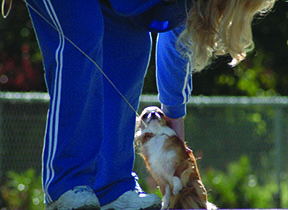
6. Teach Your little dog A “Pick-Up Warning” Cue. Of course you’re going to pick him up sometimes – it’s what we little dog owners do. You can minimize pick-up stress for your dog by using a “pick-up warning” cue. Choose your cue (I use “Okay!” for Scooter) and use it every time you pick him up. Place your hands around him as if you’re going to pick him up, give your cue, and then put a little pressure under him but don’t pick him up yet. This gives him time to realize you are picking him up, so he isn’t startled. When you can see he’s aware of the pending lift, go ahead and pick him up. Eventually the cue itself will be enough to prepare him. When I put my hands on Scooter and say “Okay!” he actually boosts himself off the ground a little, into my hands.
7. Respect His Needs and Preferences. Owners of little dogs often complain that they can’t train their dogs to lie down. Think of it from the dog’s perspective: he’s already tiny and vulnerable; well, he’s even more so when he’s lying down. Plus, lots of small dogs are sensitive to cold, and to hard or rough surfaces. Try teaching him to lie down on a soft, raised surface, where he’ll be more comfortable and feel less threatened. The raised surface gives you the added advantage of being able to move your lure below “ground level” to maximize the “down” potential.
8. Allow Him to Say “No.” One of the reasons “arm-dogs” have a reputation for being snappy is that they are often forced to greet people while restrained in their human’s arms. If they are at all fearful or feel threatened in any way, they cannot escape – whereas a dog on the ground, on or off leash, can move away or duck behind his owner to escape unwanted attentions. Ask your potential greeters to kneel down, make themselves small, and let your little dog approach them. If he chooses not to greet, don’t force him.
Housetraining Small Dogs Can Be a Challenge
Housetraining small dogs is sometimes difficult — but not because they are any less capable than bigger dogs of learning where and when it’s appropriate or inappropriate to go potty. If your little dog’s housetraining is giving you headaches, it may be because:
Little dog signals are harder to see. If a Bloodhound sits and stares at your face and drools in your lap while you are reading the paper, sending “I have to pee” signals, you probably notice. If a Cavalier King Charles Spaniel sits and stares your ankle, it’s easy to miss.
Big dog owners have more reason to be motivated. A tiny Chihuahua puddle behind the guest bed may not be discovered for weeks or months (or maybe never). The Great Pyrenees lake in the kitchen is impossible to miss. It’s a simple matter to pick up a teeny terrier turd, toss it in the toilet and dismiss the mistake. A moist, massive Mastiff mound is an entirely different matter.
Little dogs may have smaller holding capacities. Although you would expect their organ capacity to be proportionate to their size and intake, bottom line is that some of them do seem to need to go out on a more frequent potty schedule.
Little dog owners are more likely to supervise less, and use crates that are too large (in which the teeny Toy puppy can poop and pee in one end and sleep and play happily in the other) or not crate at all. “A little pup can’t possibly be as much trouble as a big one, can he? (wrong!), and besides, we want Shrimp to sleep with us!” Later, maybe, but not until he’s house-trained!
Little dog owners are more likely to paper-train and continue to rely on paper-training, sending a mixed message about inside-elimination versus outside-elimination.
Little dogs are more likely to have had their den-soiling inhibitions damaged prior to purchase or adoption by the owner as a result of over-crating and dirty puppy mill conditions. If a dog is required to live in his own excrement and urine, he comes to think that living in filth is normal, and he won’t make an effort to “hold it” until he has access to a more suitable environment. This makes housetraining very difficult. Little dogs, by virtue of their size, are more popular as pet store and puppy mill breeds – both environments where they are more likely to be over-crated.
The answer to housetraining the little dog is scrupulous management. Constant supervision, through the appropriate use of leashes, crates, tethers, direct supervision, and regular trips to the outdoor bathroom spot — every hour on the hour, at first, if necessary. Pay close attention so you don’t miss your dog’s signals. All the other regular housetraining tips also apply, of course – feed regular meals instead of free-choice feeding; pick up water before bedtime, switch to a different kind of crate substrate if necessary, and clean soiled spots with enzyme-based cleaners meant for animal messes.
Companion Dog Basics
Keep in mind that managing your small dog (like every dog) is just as important as training him. If his potty-training isn’t rock-solid, keep him out of situations when he’s likely to “make a mistake.” Prevent him from being rewarded by the behaviors you don’t want, and consistently and generously reward the behaviors you do want, with treats, attention, toys, or a nap on the sofa.
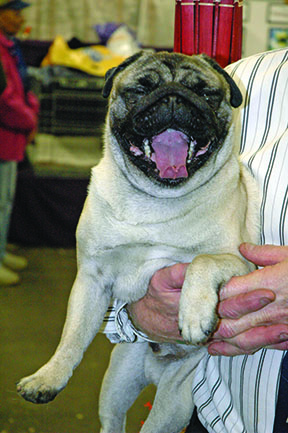
This means turning your back on the jumper and petting him (and/or giving a treat) only when he sits – and making sure guests do the same. He will soon learn to sit for attention. Be sure to pay attention to him when he does!
It also means body-blocking your dog when you see the “sofa gleam” in his eye – by moving into the open sofa space and/or not making your lap available – until he sits, and then inviting him up (assuming he is allowed up). Be sure to notice when he sits (as small as he is, it’s easy to overlook him when he’s sitting politely), and invite him up as his reward.
Every little dog also needs to be well-socialized. Treat him like a dog! From early puppyhood, make sure that he has lots of positive experiences with other dogs, to help dispel the aggressive “arm-dog” image of the angry Pomeranian nestled in the ample and befurred bosom of the wealthy dowager.
Your little dog needs to have his feet on the ground a good part of the time so he can learn to go up and down stairs, get into cars, and walk on grass, dirt, gravel, carpeting, wood, and tile floors. Take him hiking. Dusty could easily hold his own on an all-day wilderness hike with the rest of our pack.
Have him meet lots of friendly people – all ages, shapes, sizes, and races – armed with lots of tasty treats in lots of controlled circumstances. A good rule of thumb for socialization is to expose your pup to at least 100 different kinds of settings and types of people in his first four months of life. At the same time, of course, protect him from dangerous situations, such as encounters with larger dogs who truly could hurt him. (See “Conditioning Confidence in Your Dog or Puppy,” WDJ June 2009.)
Play It Safe and Smart
One of the reasons little dogs sometimes have attitudes about big dogs is that owners tend to panic when they see a big dog approaching. The owner’s stress transmits to the little dog, who then becomes anxious himself. If you grab your dog every time another dog approaches, it can be even more stressful for him and increase the potential for a confrontation.
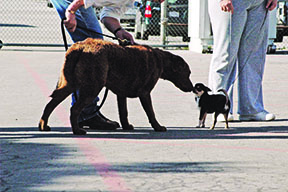
Little dogs sometimes do get savaged by big dogs because their owners forget to think or to anticipate and avoid hazards to their little companions. “Be smart” means don’t take your little dog places that you know are frequented by large, uncontrolled dogs. Use your local dog park only if there is a separate fenced area for little dogs.
If you’re walking your dog on the street and you see someone approaching with a large dog, take evasive action – calmly cross the street while you practice good heeling so you can pass at a safe distance. Be on guard even at canine competition events, where you might think your dog is safe. He’s not. There are multiple stories of little dogs being attacked, injured, or even killed, by larger dogs at canine competitions.
If you see a loose dog approaching, look for an escape route – a place of business or fenced yard you can step into for safety. Toss a handful of tasty treats away from you to slow down the approaching dog and give you and your little guy time to escape. Carry an aversive spray, a pop-open umbrella, or marine air horn that can thwart a persistent canine visitor. (Be sure to give your own dog a positive classical association with the aversive first, so you don’t scare the stuffing out of him if you have to use it.)
Only as a last resort should you pick your dog up; doing so also puts you at risk for injury if the approaching dog is intent on mayhem. Not that the risk of injury would stop any of us “little dog people” from protecting our beloved little ones. Our own safety is often the last thing we think about when our canine family members are threatened. Their diminutive size only heightens the protective instinct that motivates us to risk life and limb for them.
During his 14 years with us, Dusty convinced me that he was much sturdier than I imagined, and that he was every bit a Real Dog in his little dog body. Go ahead, big dog people, scoff at us if you want. It’s only a matter of time before you meet the little dog who steals your heart the way Dusty stole mine.
Pat Miller, CBCC-KA, CPDT-KA, is WDJ’s Training Editor. She lives in Fairplay, Maryland, site of her Peaceable Paws training center, where she offers dog training classes and courses for trainers. Pat is also author of many books on positive training.
Finding the Truth on the Dog Food Label
Have you ever wondered whether the information on your dog’s food labels is accurate after all not every dog food label is clear about the food’s content.? If so, welcome to the club! We fret about this sort of thing, too – and sometimes, our worries turn out to be well-founded.

There are a host of laws that regulate pet food labels, the broadest one being the Food and Drug Administration’s Federal Food Drug and Cosmetics Act, which requires all food labels – pet food included – to be truthful.
Other FDA regulations for the label require proper identification of the product (the contents must match the label); a net quantity statement (amount of food inside the package is accurately described on the outside); the name and place of business of the manufacturer or distributor; and proper listing of all the ingredients in the product in order from most to least, based on weight.
The FDA also reviews specific claims on pet food, such as “maintains urinary tract health,” “tartar control,” and “improved digestibility,” to make sure that the company wishing to make those claims can provide evidence that the statements are supported by sound scientific research and testing.
Believe it or not, there are also state and federal laws that address the point size of the type that can and must be used for various parts of the label, the location of various bits of information on the label, and even the adjectives that may be used to describe the food.
Pet Food Police – Not!
Sadly, we all know that laws are useless if there is no surveillance or enforcement. State feed control officials bear the responsibility for monitoring pet food labels and testing products to make sure they are accurately labeled. By all accounts, some states have well-funded programs, with vigilant feed control officials who consistently review pet food labels and routinely pull samples to test. However, other states have virtually zero surveillance and testing – unconscionable when you consider that pet food companies must pay each state for a permit, with fees based on tonnage sold, wherever their products are sold.
If they find something illegal on the label, or pull a sample and determine that the product is not accurately labeled, state feed control officials can order a “stop sale” of the product in their own state and/or fine the company for the infraction. Again, in some states, this happens frequently; in others, never.
In the states where pet food surveillance, testing, and enforcement are alive and well, feed control officials are mainly focused on whether the products are labeled truthfully, and whether testing confirms the accuracy of the guaranteed analysis (GA).
Even in the states with a reputation for strict surveillance, however, it’s rare that pet owners will ever learn about failed tests or enforcement actions taken by state feed control officials. If labeling infractions are found or testing reveals that the GA is inaccurate, officials and pet food companies almost always resolve the issues without ever notifying the public.
Guaranteed Analysis of a Dog Food Label
The GA is important to pet owners and regulators because it’s where the macro-nutrients of chief concern to pets are quantified. By law, only four items are required to be listed on a pet food’s GA: The minimum amounts of protein and fat; and the maximum amounts of crude fiber and moisture. Minimums of protein and fat are used, because, from a dog’s standpoint, these are the significant components of the food – and from a dog owner’s perspective, they comprise a goodly share of what you are paying for.
Crude fiber and moisture are expressed in maximum percentages, since both are nutrient-free (though they do have functions in the formula).
The numbers given for crude fiber and moisture are nearly always perfectly accurate. But dog owners should be aware that the minimum amounts listed for protein and fat are just that: the minimum amount that is in the food. Sometimes, the actual amount is far higher. This isn’t a huge problem for most of us, but owners of dogs who need to have scrupulously restricted fat in their diets (such as dogs who are prone to pancreatitis) should never trust the amount listed on the GA alone.
Why don’t the pet food companies use more accurate numbers on the GA? It’s partly to make sure that the products won’t fail a test of the minimum amounts of protein and fat, and partly to account for variations in nutrient levels in their raw ingredients.
If your dog needs a restricted fat diet – or maybe you just want to test the professionalism of your dog’s food maker? – contact the food company and ask for the actual amounts of protein and fat in your dog’s food. Every company should be able to provide this information for every product they make; after all, the products are tested for these levels during the production of every batch. We wouldn’t recommend buying products from any company that can’t or won’t provide this information.
Some companies list both the guaranteed analysis (what the product is guaranteed to contain) and the “nutrient analysis” (the actual amounts as confirmed by lab tests of a typical batch) for all of their products on their websites. This consumer-friendly strategy is ideal.
Where’s The Beef?
We’ve often been asked whether there is any way to know that the ingredients that are listed on the label of a pet food are really in there. There is! In recent years, lab tests have been developed that can identify specific animal proteins and grains.
We were interested in running some of these tests the moment we learned they existed, but our ardor cooled when we learned the cost of the tests – prohibitive for even the most motivated consumer – say, someone who owned a valuable dog who is seriously allergic to beef or wheat. We consoled ourselves that the out-of-our-reach tests were not necessary; we’ve always assumed that the risk of bad press for a pet food company who could be caught in the act of cutting corners or handling its ingredients in a sloppy way was far greater than any benefit of doing so.
But then this happened: An article appeared in the October 2012 issue of Petfood Industry magazine, authored by Laura K. Allred, PhD, president of ELISA Technologies, Inc, which happens to be one of the labs capable of such testing. In the article, Dr. Allred described animal protein and grain identification tests conducted by ELISA Technologies on 21 commercial dog foods. The results shocked us:
Eight of the foods tested positive for an animal protein not listed on the ingredient label. (For example, a food was found to contain beef, but the label did not indicate beef was in the formula.)
Two of the foods claiming to contain a certain animal species tested negative for that species. (As one example, a food claiming to contain venison contained no venison.)
Five foods with no gluten source listed on the label were found to contain gluten. This included two foods that were specifically labeled as “gluten-free” (in addition to not having a gluten source listed on the label).
None of the products tested, including the products that were caught with inaccurate labels, were identified in the article. And the article, written for an industry audience, included lots of helpful suggestions for how a pet food maker could avoid what were assumed to be accidental contaminations or production errors in the future, in order to “more confidently guarantee both the safety and authenticity of their products.”
Of course, we drew a different conclusion: That we absolutely have to find the money in our budget to order a bunch of tests of various foods. We looked up the prices – and were thrilled to learn that the cost has dropped quite a bit since we last checked. We’re choosing products to include and getting samples ready now. And you can bet that we will report the full results of every test we order.
Dogs with the MDR1 Mutation: Drug Sensitivities
[Updated January 9, 2019]
Most dog owners are aware that Collies and other herding breeds may be sensitive to ivermectin, used for heartworm prevention and to treat certain parasites. But did you know that these dogs can also be sensitive to a number of other drugs, and that other breeds can also be affected?
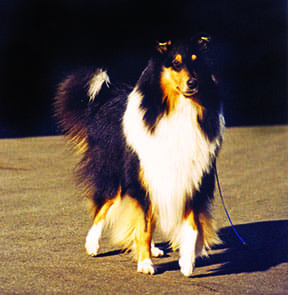
It’s been known since 1983 that ivermectin can cause neurologic toxicity in some, but not all, Collies. In affected dogs, toxicity is caused by doses of ivermectin that are 1/200th of the dose needed to cause toxicity in normal dogs. Symptoms of neurologic toxicity can include uncoordination or loss of balance (ataxia), depression, disorientation, excess salivation, pupil dilation, nystagmus (abnormal movement of the eyes), blindness, tremors, recumbency (inability to get up), coma, respiratory compromise, and even death.
But the next big accomplishment in gaining an understanding of exactly what was responsible for the toxic effects of ivermectin in some dogs came in 2001, when Katrina Mealey, DVM, PhD, DACVIM, DACVCP, at Washington State University College of Veterinary Medicine, identified a mutation in the MDR1 gene that causes ivermectin sensitivity. The discovery led to WSU’s development of a test that can detect the mutant gene, so that dogs who are susceptible to this toxicity can be identified.
The MDR1 Mutation Test
Dogs can have either two copies of the defective gene (homozygous, double recessive), or one defective gene and one normal gene (heterozygous). Dogs with two copies will be most severely affected. Dogs with one copy are less sensitive (able to tolerate a higher dose before adverse effects are seen), but they are more sensitive than normal dogs.
Further research revealed that dogs with the MDR1 mutation are sensitive to a number of different drugs, not just ivermectin. Melissa Best, DVM, who went to veterinary school at WSU, explains, “MDR stands for ‘multidrug resistance.’ The protein encoded by this gene is P-glycoprotein (PGP) and is an important protein for keeping potential neurotoxins from entering the brain. The MDR1 mutation means that this protein is improperly coded and cannot do its job.”
The MDR1 mutation allows drugs to build to toxic levels in the brain, and is now referred to as “multidrug sensitivity.” Toxicity may occur from a single high dose or frequent low doses of problem drugs. Topical application of certain drugs can also cause toxicity, and the effects may last longer, but it generally takes higher doses.
The discoverer of the mutation of the MDR1 gene and establishment of testing procedures, WSU is the sole patent holder for the test to detect the mutant gene. The test requires only a simple, non-invasive cheek swab that you can collect yourself and send to WSU’s Veterinary Clinical Pharmacology Laboratory (VCPL). The test costs $70, with a discount for more than four dogs. It can be performed on any dog, including mixed breeds, at any age after weaning. The test will identify whether a dog has one or two copies of the defective gene. It takes about two weeks to get results.
Heartworm Preventives and the MDR1 Mutation
All heartworm preventive medications can affect dogs with the MDR1 mutation, including ivermectin (Heartgard), milbemycin (Interceptor, Sentinel), selamectin (Revolution), and moxidectin (ProHeart, Advantage Multi). The very low doses used for heartworm prevention, however, should not cause any harm, even to dogs with two copies of the defective gene.
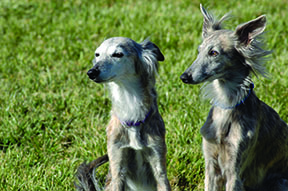
“I don’t know of any homeopathic or naturopathic alternatives to these drugs, particularly for heartworm,” says Dr. Best. “While I am very pro-holistic care, the risk of death from heartworms is greater than the risk of the drugs (especially at the low doses used for prevention). I recommend using commercial heartworm preventatives under the direction of a veterinarian.”
The higher doses of these medications that are used to treat demodectic mange, sarcoptic mange, ear mites, and other parasites, however, should be avoided in all affected dogs. Generic ivermectin preparations such as Ivomec 1% solution should not be given to affected dogs, as the potential for toxicity from the wrong dosage is too great (the instructions on many websites result in dosages at least 10 times too high). Long-acting injectable products such as ProHeart 6 may also be problematic for affected dogs.
Toxicity can also occur from eating the manure of other animals, such as horses or sheep, after they are treated for parasites with products containing ivermectin. Pesticides with ivermectin used to treat a home or yard may cause toxicity if an affected dog is exposed to the area afterward.
Ivermectin has the most potential for toxicity. Dogs with normal MDR1 genes can usually tolerate oral dosages as high as 2,500 mcg/kg of body weight before signs of toxicity are seen, while dogs with two copies of the defective MDR1 gene can tolerate only up to 100 mcg/kg of oral ivermectin. No toxicity was seen when affected dogs were given 28 to 35.5 mcg/kg monthly for one year. (For comparison, Heartgard contains 6 to 12 mcg/kg.)
Toxicity has been seen in affected dogs receiving oral doses that were 30 times the heartworm preventive dose of moxidectin and 10 times the regular dose of milbemycin. Selamectin caused toxicity at 2.5 times the recommended dose when that amount was given orally, but higher doses are tolerated when the product is applied topically, as directed.
Other avermectins can also cause toxicity, including doramectin (Dectomax), eprinomectin (Eprinex), and abamectin.
Spinosad, a flea-control medication included in Comfortis, Trifexis, and other products, increases the risk of neurological toxicity even in normal dogs when combined with high doses of ivermectin (and possibly other drugs) used to treat parasites. While theoretically safe, use caution when combining Heartgard or other ivermectin heartworm preventive drugs with products containing spinosad for affected dogs. Do not combine high doses of ivermectin with spinosad for any dog.
Other Drugs and MDR1
Some additional drugs are known to cause problems for dogs with the MDR1 mutation, while others are suspected to be problematic. A few drugs affected by PGP appear to be safe to use in normal doses. “There are many known drugs which are pumped out of the brain by p-glycoprotein,” says Dr. Best. “However, not all seem to cause toxicity in mutant dogs. Clearly more research is needed to understand the mechanisms at work.”
Drugs that are known to affect or may affect dogs with the MDR1 mutation include some used to treat cancer, pain, parasites, bacterial infections, diarrhea, vomiting, and anxiety, as well as pre-anesthetic drugs. In addition to ivermectin, the most commonly used problem drugs are acepromazine (Ace), butorphanol (Torbutrol, Torbugesic), and loperamide (Imodium). Most of these drugs require a prescription, but loperamide, an anti-diarrheal medication, is available in over-the-counter preparations.
MDR1 Breeding Considerations
Ideally, only dogs with no copies of the MDR1 mutation would be used for breeding. This may not be feasible or even optimal in some cases, however, particularly in heavily affected breeds, where the rest of the gene pool would be too limited, which leads to other problems. Any dog with the mutation may pass it along to their offspring, but dogs with just one copy of the mutation can also produce normal puppies, particularly when bred to dogs that do not carry the mutation at all. In this way, the population of affected dogs can be reduced through subsequent generations.
What To Do
Even if you don’t plan to breed, all dogs from affected breeds should be tested for the MDR1 gene for their own protection. Mixed-breed dogs from affected breeds or whose parentage is unknown should also be tested, as it’s impossible to tell for sure just by looking at a dog what its ancestry might be.
Before the genetic test became available, vets often repeated the adage, “White feet, don’t treat!” as a reminder that such dogs might be at risk, since many herding breeds and mixes have white feet. This is not reliable, however, as some dogs with white feet may have normal genes, and dogs with non-white feet may be affected by the mutation. Dr. Mealy recommends testing all mixed-breed dogs with unknown breed status, as one exposure to a drug to which they are sensitive could be fatal.
“The biggest problem I have seen with MDR1 mutants is accidental exposure by owners who were unaware of the problem,” says Dr. Best. “I have seen several dogs die from this problem after being exposed to ivermectin products.
“The worse case that I saw where the dog survived was an Australian Shepherd from Montana who became exposed after licking up a dollop of dewormer that had dropped out of a horse’s mouth when the owner was deworming it. The dog was flown on a private jet to WSU, with a private vet tech hired to breathe for the dog, as he was severely affected by the time he had been brought to his veterinarian (within hours of exposure to the drug).
“That patient was on a ventilator for nearly two weeks and eventually made a full recovery, however the bill was well over $10,000 and not everyone can fly a dog to a referral center on a private jet! I have also seen dogs become affected who ate horse manure after the horses had been dewormed with Ivermectin.”
If tests show that your dog is affected by the MDR1 mutation, or if your dog could be affected and has not been tested, make sure that your vet is aware of potential drug sensitivity. You may want to give your vet a copy of the list of drugs from the VCPL website to include in your dog’s file. Be sure to remind your vet of the situation any time that your dog needs to be anesthetized or sedated so that the wrong medications will not be given.
If you use any drug that might cause toxicity, start with low doses and gradually increase the amount that is given over a few days as long as no adverse side effects are seen. Continue to monitor your dog closely for signs of toxicity, particularly when the drug is given daily, as chronic toxicity caused by cumulative effects could develop.
If your dog shows signs of toxicity after applying a topical product, immediately bathe your dog with soap to remove as much of the product from the skin as possible.
If your dog ingests a topical product or if you see signs of toxicity after giving oral medication, contact your vet immediately. If ingestion was recent, your vet may induce vomiting and give activated charcoal. Further supportive care, including IV fluids and ventilation, may be needed if signs are severe. Dogs may recover if supportive care can be offered for long enough, but it can take days or weeks before enough of the drug breaks down on its own. “Sadly,” says Dr. Best, “Because we have no way to get the neurotoxic drugs out once they are in the brain, most dogs are not able to be saved once we recognize a toxicity problem.”
Mary Straus is the owner of DogAware.com. She and her Norwich Terrier, Ella, live in the San Francisco Bay Area.
Giving To Animal Charities
It’s that time of year again: making a list and checking it twice. Many of us include animal-related charities on our gift list. But how do you choose which ones to support? There is no shortage of good causes. Here are some guidelines for how to evaluate an organization as a potential recipient of your hard-earned dollars.
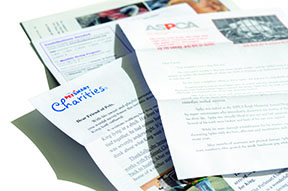
It may seem obvious but the first thing to contemplate is whether the cause – and the approach to it – is something you believe in and are passionate about. There are so many pleas for funding that sometimes we can get caught up in the immediate emotional moment, especially when faced with horrific images or stories; that can be an effective tactic to raising money. We hope to purge the haunting images of abused, neglected dogs in dire circumstances by sending off a check. But how do you know whether your check will actually alleviate any animal suffering?
Research, Research, and More Research
Think about your specific goals for your contribution. For example, let’s say you want to contribute to an organization that addresses pet overpopulation. There is a wide spectrum of approaches to this very issue, so you should think hard about how you would like to see the problem addressed. You could contribute to the actual costs of spay and neuter programs, or rescue organizations, or education programs!
When you’ve found the type of cause(s) near and dear to your heart, obtain as much information as you can about the organizations you might support. A charity’s website is a good place to start. Read about the organization’s goals, accomplishments, and challenges. Look for its mission statement; it should be a concise and vivid expression of the group’s purpose, and provide an overview. Who’s running the show? Review the credentials of the key staff members and board members; if it’s a 501(c)(3) organization and thus able to receive tax-deductible charitable contributions, there must be a board of directors.
Next, look at how the organization determines the need for its services and programs. Does it have targeted goals? Who benefits? How are these goals monitored and evaluated? How does the organization report results (short-term and long-term)? Are reports clear, understandable, and supported? Do they reflect the stated mission? How do they share the results of your donation?
Ideally this information will be readily available; if not, ask for it. Most organizations are more than willing to discuss their programs. That said, I recently crossed a couple charities off my list of prospects when I called for more information and the individuals I spoke with weren’t able to answer my questions and no one returned my call as promised. An important hallmark of a good charitable organization is its transparency in all aspects of its operations (not to mention good donor relations).
Follow the Money
Next, as much as you may hate this idea, it’s important to take a look at any charity’s financial reports. Many organizations post their financial information on their websites. If the organization is exempt from income tax, they are required to annually file Form 990 (see side bar) with the Internal Revenue Service. These forms are open to public inspection and must be made available to potential donors upon request. If the organization is not required to file Form 990 – and thus is not a registered 501 (c) (3) non-profit – request copies of their financial reports. A good organization will be able to provide some sort of financial report – an accounting of its income and expenses. If an organization can’t or won’t share these with you, then don’t share your money with them – they can’t account for it.
A good guideline to look for among efficient charities is an expenditure of 65-75 percent (or more) directly on a charity’s programs and 25-35 percent (or less) on fundraising and administration expenses. While successful organizations should allocate the majority of funds to providing programs and services, remember when reviewing salaries that they still need to recruit and retain talented people while attempting to keep administrative costs reasonable. When reviewing fundraising expenses, keep in mind that it costs money to raise money, but this should not be the reason for the existence of the organization.
Examine the details of the fundraising ratio: the amount raised compared to the amount expended. Consider that ratios can be higher than ideal due to special circumstances such as being a new organization (and thus having higher expenses than an established entity) or advancing a new cause. A group with a high fundraising ratio may actually have increased revenue (spends more to make more), which in turn allows it to do more.
Large organizations are sometimes criticized for their lobbying, fundraising, and administrative expenses. They often defend this by saying that because they are large and receive bigger revenues, they can spend a lot of money and as a result can accomplish the large goals that smaller organizations don’t have the resources to tackle. Again, compare your goals to theirs. It’s a mismatch if, for example, it’s most important to you to increase the adoption of homeless pets, and the organization spends a relatively small amount on its “boots on the ground” programs in favor of legislative reforms.
If possible, review the financials for a minimum of the past three years. Look for organizations that are able to grow their revenue at least at the rate of inflation, continue to invest in programs, and save money for a rainy day.
Many Giving Options
Donations can be made to anyone or any type of organization you desire: individuals, private organizations, for-profit organizations, or not-for-profits. If you want the donation to be tax deductible, however, verify that the organization has been designated as a 501(c)(3), proving it is organized and operated for charitable purposes. This is the U.S. Internal Revenue Code for tax-exempt status and is regulated by the U.S. Department of the Treasury through the IRS. It allows for the federal tax exemption of non-profit organizations, specifically those that are considered public charities (receiving most of their income from the public or the government), private foundations (receiving most of their income from investments and endowments and using that money to award grants to other groups), or private operating foundations (donating most of their assets directly to the causes rather than awarding grants to other charities).
To qualify, an entity must be organized and operated exclusively for religious, charitable, scientific, testing for public safety, literary or educational purposes, or to foster national or international amateur sports competition, or for the prevention of cruelty to children or animals.
Be aware that some organizations doing “charitable” work may not have obtained not-for-profit status for any number of reasons; it doesn’t necessarily mean that the group doesn’t have a worthy cause. Ask the same questions you would of a not-for-profit and then make your decision. Understand, however, that donations made to individuals or to any organization that is not registered as a not-for-profit are not tax-deductible.
Charity Navigator (charitynavigator.com), GuideStar (guidestar.com), and the Better Business Bureau’s Wise Giving Alliance (bbb.org/us/Wise-Giving) are great resources for helping donors make informed decisions; they do a lot of the legwork by evaluating and reporting on major charitable programs and often offer downloads of the charities’ relevant documents (such as the 990 forms).
Big, national charities may be the most persistent in asking for help, but consider local organizations working to effect change in your own backyard, such as shelters and rescues. These organizations often struggle with small budgets, and can make even small donations go a long way.
What if you want your money to go toward a specific program or even a specific dog? If there’s a particular disease that has touched your dog’s life, consider donating to university research programs targeting that disease; these programs are often the first to find new treatments and cures.
While the IRS does not allow tax deductions for donations made for a specific person, there are organizations that are set up to help direct funds to individual dogs. One such organization, Magic Bullet Fund, allows for tax-deductible contributions to be made to a specific dog battling cancer that has registered with them. Donations made for a dog’s treatment are held in reserve for that dog; the funds are redistributed to the General Fund if they cannot be used.
If you have a substantial amount to give, meet with the organization in person to direct how you want your donation to be used. You may be able to create and fund a specific program or even specific research. Providing for your favorite animal-related charity in your trust or will is another option.
Donor Beware
It’s not a good practice to give out your personal information to any organization representative who calls you, comes to your door, or approaches you on the street, soliciting a donation. If it’s a cause you’re interested in, contact the organization directly. This ensures you are dealing with the organization itself and not a fraudulent entity posing as a charity; and if you do decide to donate, you’ve eliminated a possible middleman and all of the contribution will go directly to the organization. Do not give cash.
It has become common practice in modern fundraising for charities to share, swap and sell their donor lists. If you don’t want your name on these mailing lists, request that your information not be shared.
Research to see if the organization has been mentioned in any news reports that might link them to questionable practices; also research individual executives. The organization itself might not be addressing any of these issues, but negative publicity is difficult to hide in these days of information-sharing.
If you donate over time, be sure to periodically evaluate whether or not the organization is still in line with your interests; missions can shift over time and you may want reconsider. I had to do this when I learned that one of the advisory board members of a charity that I had donated to regularly supported an industry that was in direct opposition to what I thought the organization stood for. I asked a representative of the charity for an explanation of this contradiction, but the rep either couldn’t or wouldn’t even try to explain. I concluded that the advisory board member probably donated a lot of money to the charity – a lot more than I ever could – and that the group had more interest in him than in small donors like me.
I continued to receive solicitation calls even though I had informed the organization that I would no longer donate to the charity as long as that person was still on the charity’s advisory board. One phone solicitor told me that I should overlook my concern because of all the good things the organization did. After I politely informed the caller that this incongruency made me suspect the group’s true mission, I was removed from all of its solicitation lists. Don’t be afraid to ask the hard questions!
Which leads me to charities you may fund inadvertently. I was dismayed to learn that one of the dog product suppliers I used to purchase from gave a portion of their proceeds to an organization that tested on animals (including dogs).
I nicknamed this “stinkwashing” (inspired by the “pinkwashing” term coined by the Breast Action Fund for the hypocrisy of the actions of companies and organizations that claim to care about breast cancer and promote a pink ribbon product but at the same time produce, manufacture, and/or sell products that are linked to the disease). Now I’m always suspicious of generalized statements about “proceeds of this sale will be donated to…” Are these companies in line with your personal values? What is the company doing to ensure that its donations (from the sale of products to you) are not linked to programs that are detrimental to dogs or animals? If you can’t tell or don’t know what the organization does, reconsider your purchase.
More than Money
What about the multitude of us that have no funds to spare in these difficult economic times? Don’t feel guilt – it has no useful purpose. And don’t let a lack of financial resources hinder your generosity. Many organizations need your non-monetary donations as well. Shelters and rescues often have holiday wish lists for items that you may be able to spare without spending a penny. Bedding and towels are common needs, as are “safe dog toys” (ones without parts that can be chewed off), crates, and collars and leashes that can be given to adopters.
And if you’ve got some time, consider volunteering for your favorite local organization. You could walk or bathe homeless pets, help with a shelter’s laundry, or perhaps donate your skills at website design or even something as mundane as data entry. While you might not get a tax deduction, the benefit to a cash-strapped, understaffed shelter or local rescue can be priceless.
Barbara Dobbins is a San Francisco Bay Area dog trainer on hiatus. When she’s done paying for her dog’s cancer treatments, she will donate to canine cancer research.




